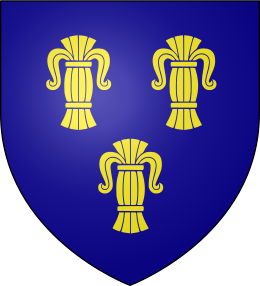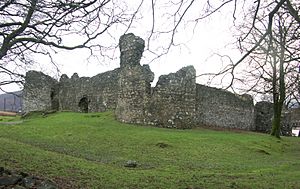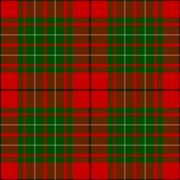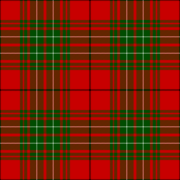Clan Cumming facts for kids
Quick facts for kids Clan Cumming or Comyn |
|||
|---|---|---|---|
| Na Cuimeinich | |||
 |
|||
| Motto | Courage | ||
| Slogan | An Cuimeanach! An Cuimeanach! | ||
| War cry | Fhad 's a bhios maide sa choill, cha bhi foill an Cuimeineach ("as long as there is a stick in the woods, there won't be deceit from Clan Cumming") | ||
| Profile | |||
| Region | Highland & Lowland | ||
| District | Badenoch | ||
| Plant badge | Common Sallow (Salix cinerea) (the ... Willow) Cummin plant | ||
| Animal | Lion | ||
| Pipe music | Willie Cumming's Rant | ||
| Chief | |||
 |
|||
| Sir Alexander "Alastair" Penrose Cumming of Altyre | |||
| Seat | Altyre House, Forres, Moray, Scotland | ||
| Historic seat | Lochindorb Castle Inverlochy Castle |
||
|
|||
|
|||
|
|||
|
|||
Clan Cumming (in Gaelic: Na Cuimeinich) is a Scottish clan from the central Highlands. This clan played a very important part in Scotland's history during the 1200s and in the Wars of Scottish Independence. The Comyn family was once the most powerful in Scotland. However, they were defeated in a civil war by their rival for the Scottish throne, Robert the Bruce.
Contents
History of Clan Cumming
Where did the Clan Come From?
Like many powerful families in Scotland, the Comyn clan came from Normandy or Flanders. Their name might come from a place called Bosc-Bénard-Commin in Normandy, or from Comines in France.
Richard Comyn helped establish the family in Scotland. He was the nephew of William Comyn, who worked for King David I. Richard's son, William Comyn, became very important. His mother was a granddaughter of King Donald III of Scotland. William's son, Walter Comyn, gained control of the Badenoch area. Their main base was Ruthven Castle. This castle was key because it controlled important mountain passes. Later, this area passed to Walter's nephew, the first John Comyn, known as "the Red" Comyn.
The Comyns also controlled the Lochaber area. You can still see the ruins of Inverlochy Castle there, which the Comyns built around 1270–1280.
In 1244, the Comyns had to promise loyalty to Henry III of England. But in 1251, King Henry recognized their power in Scotland. He gave them back their influence while King Alexander III of Scotland was still young. However, when Henry tried to take over the Scottish government in 1255, the Comyns took action. They kidnapped the young King Alexander III in 1257. After Alexander III grew up, the Comyns continued to hold many important government jobs from 1260 to 1286.
John "the Black" Comyn
John II Comyn, Lord of Badenoch, known as the Black Comyn, was the son of the first John Comyn. He had a claim to the Scottish throne because he was related to King Donald III of Scotland. After King Alexander III died in 1286, John was chosen as one of the six guardians of Scotland. Their job was to rule for Margaret of Norway, who was supposed to be the next queen. But she died on her way to Scotland.
King Edward I of England was asked to decide who should be the next king. He chose John Balliol. John Comyn had married Eleanor Balliol, John Balliol's daughter. The Black Comyn died around 1303 at Lochindorb Castle, a castle the Comyns built.
The Black Comyn's sister married Sir Andrew Moray. Their son, also named Andrew, later led a Scottish army with William Wallace. They won a big victory at the Battle of Stirling Bridge on September 11, 1297.
John "the Red" Comyn
Wars for Scottish Freedom
The son of the Black Comyn was John III Comyn, Lord of Badenoch, known as the Red Comyn. He was related to both King Donald III and King David I. At this time, the two main branches of the Clan Comyn were the Comyn Lords of Badenoch and Lochaber, and the Comyn Earls of Buchan.
The Comyns were very powerful. They controlled important castles and communication routes, especially in northern Scotland. Their influence stretched from Inverlochy Castle in the west to Slains Castle in the east. They had allies in many castles like Ruthven Castle, Lochindorb Castle, and Blair Castle. These castles helped them control key passes into the Tay basin. Another branch, the Comyns of Kilbride, held power in southern and central Scotland. They had castles like Kirkintilloch and Dalswinton.
The Comyns also held many royal castles as hereditary sheriffs. These included Dingwall Castle, Banff Castle, and Wigtown. In the early 1290s, they also took charge of castles like Aberdeen Castle and Jedburgh Castle.
The Comyns became even more powerful through marriages with other important families like the earls of Marr and Ross, and clans like Clan MacDougall and Clan Murray. Other allies included Clan Graham, Clan Fraser, Clan Sinclair, and Clan Maxwell.
The Comyn clan held the important job of Justiciar of Scotia for a long time. This was the most important political job in the kingdom. Three Comyn Lords of Badenoch and Earls of Buchan held this position for 66 years between 1205 and 1304.
As the conflict between England and Scotland grew, John III Comyn, Lord of Badenoch, the Red Comyn, became a leader in the fight for Scottish freedom. In 1296, he and his relatives attacked Carlisle, which was defended by Robert Bruce, the father of the future king.
From 1302 to 1304, John Comyn was the most powerful leader in Scotland. He led the Scottish army against the English at the Battle of Roslin on February 23, 1303. His army, though smaller, defeated the well-trained English army. However, many of John Comyn's allies made peace with Edward I of England. So, John also surrendered to King Edward I in 1304.
On February 10, 1306, John Comyn, Lord of Badenoch, and Robert the Bruce met in a church in Dumfries. During this meeting, John Comyn was killed by Bruce. The exact reasons are debated. Some say Bruce wanted Comyn's support, but Comyn was angry at the idea of betraying his agreement with King Edward I. It is believed that Robert Bruce attacked the Red Comyn, and his friends finished the act. Sir Robert Comyn, the chief's uncle, was also killed trying to defend his nephew. After this, the Comyn chief titles of Lord of Badenoch and Earl of Buchan were taken away by the crown.
John Comyn's son, also named John, was defeated by Robert the Bruce in a small battle. This John fled to join the English. He was later killed at the Battle of Bannockburn in 1314, fighting with the English against Bruce. Any hope of the Comyns returning to power ended at Bannockburn. Adomar Comyn, John's son, died two years later. He was the last male of the Badenoch Comyn line. The lands in Badenoch, once the heart of Comyn power, were given to the Clan Macpherson because they supported Robert Bruce. The fall of the Badenoch Comyns removed them from major Scottish politics. However, other branches of the clan continued to do well. The spelling of the name Comyn generally changed to Cumming, and the Cummings of Altyre became the recognized clan chiefs.
Clan Conflicts (14th-16th Centuries)
By the 1400s, Clan Comyn, now known as Clan Cumming, was a Highland clan. But its members still played a big part in the history and culture of the Badenoch, Strathspey, and Aberdeenshire areas of Scotland.
In the 1400s and 1500s, the Cummings had serious feuds, or long-running fights, with Clan Macpherson, Clan Shaw, and Clan Brodie over land in Nairnshire. For example, in 1550, Alexander Brodie, chief of Clan Brodie, and 100 others were declared rebels for attacking the Cummings of Altyre.
In 1424, the Comyns took some land from the Clan Mackintosh by force. Malcolm Mackintosh fought back and killed many Comyns. The Comyns then attacked the Mackintosh homeland of Moy. They tried to drown the Mackintoshes on their island, but failed. Later, a peace meeting was held at the Comyn's Rait Castle. However, the Mackintoshes attacked and killed their Comyn hosts.
In 1594, Clan Cumming supported the Earl of Huntly, who was the chief of Clan Gordon. They fought alongside Clan Cameron at the Battle of Glenlivet. They defeated the Earl of Argyll, chief of Clan Campbell, who was supported by the Chattan Confederation (including Clan Mackintosh, Clan Murray, and Clan Forbes).
During the late 1500s and 1600s, clan members were known for their musical talents. They were the official pipers and fiddlers for the Laird of Grant of Clan Grant.
Clan Cumming Today
Many members of the Cumming (Comyn) clan left Scotland to find new opportunities. Some went to Ireland, England, and Wales. Later, in the 1700s and 1800s, others moved to North America, Australia, South Africa, New Zealand, and the Mascarene Islands (Mauritius and La Réunion). Because the clan spread out, the spelling of the family name changed over time. Different spellings include Cumming or Comyn in Scotland, Cummins or O'Comyn in Ireland, and others like Cummin, Cumins, Cuming, Coman, and Cummings.
Clan Chiefs and Home
After the last chief of the Badenoch line died, the leadership of the clan passed to the Cummings of Altyre. This family holds the chiefship to this day. The current Chief is Sir Alexander "Alastair" Penrose Cumming of Altyre. He is a descendant of Sir Robert Comyn, the knight who was killed while defending his nephew, John the Red Comyn.
Clan Castles
Many castles were held by the Clan Comyn and later by their descendants, the Clan Cumming. Here are some of them:

- Inverlochy Castle, located near Fort William, is a ruined castle with round towers at each corner. The largest tower is called the Comyn's Tower. Robert I captured and destroyed the castle in 1307.

- Lochindorb Castle, near Grantown-on-Spey, was held by the Comyns. King Edward I of England visited it in 1303.
- Dunphail Castle, a few miles south of Forres, Moray, was a Comyn property. In 1330, Alasdair Comyn of Dunphail and four of his men were captured during a siege. They were killed, and their heads were thrown over the castle walls. The rest of the castle's defenders also tried to escape but were defeated.
- Balvenie Castle, in Moray, Scotland, was held by the Comyns. However, Robert the Bruce damaged it in 1308, and it later passed to the Clan Douglas.
- Bedrule Castle, in the Scottish Borders, was held by the Comyns and visited by King Edward I of England in 1298.
- Blair Castle, in Perth, was once held by the Comyns.
- Castle Roy, near Grantown-on-Spey.
- Comyn's Castle, near East Kilbride.
- Dundarg Castle, in Aberdeenshire.
- Rait Castle, in Nairn.
- Ruthven Barracks, near Kingussie, is the site of a castle once owned by the Comyns.
- Urquhart Castle, near Inverness.
Clan Tartans
Chief's Coat of Arms
- The Coat of Arms for the current chief (Cumming) shows three golden bundles of wheat on a blue shield. Above it is a golden lion holding a dagger. The motto is "Courage." Two silver horses support the shield.
- The Coat of Arms for the Comyns of Buchan shows three golden bundles of wheat on a blue shield.
- The Coat of Arms for the Comyns of Badenoch shows three golden bundles of wheat on a red shield.
Religious Sites
Clan Cumming is connected to these religious places:
- Altyre Kirk, Moray, Scotland
- Cumbernauld Chapel, Lanark, Scotland
- Deer Abbey, Aberdeen, Scotland
- Glasgow Cathedral, Strathclyde, Scotland
- Inchmahome Priory, Perth, Scotland
See Also
- Battle of Roslin
- Comyn (disambiguation)
- John "the Black" Comyn
- John "the Red" Comyn



